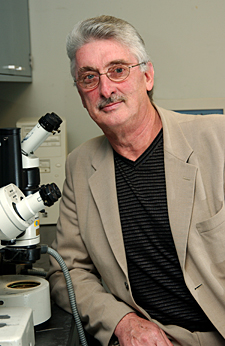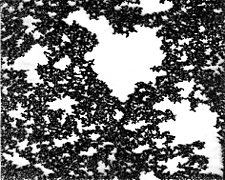

- Rozovsky wins prestigious NSF Early Career Award
- UD students meet alumni, experience 'closing bell' at NYSE
- Newark Police seek assistance in identifying suspects in robbery
- Rivlin says bipartisan budget action, stronger budget rules key to reversing debt
- Stink bugs shouldn't pose problem until late summer
- Gao to honor Placido Domingo in Washington performance
- Adopt-A-Highway project keeps Lewes road clean
- WVUD's Radiothon fundraiser runs April 1-10
- W.D. Snodgrass Symposium to honor Pulitzer winner
- New guide helps cancer patients manage symptoms
- UD in the News, March 25, 2011
- For the Record, March 25, 2011
- Public opinion expert discusses world views of U.S. in Global Agenda series
- Congressional delegation, dean laud Center for Community Research and Service program
- Center for Political Communication sets symposium on politics, entertainment
- Students work to raise funds, awareness of domestic violence
- Equestrian team wins regional championship in Western riding
- Markell, Harker stress importance of agriculture to Delaware's economy
- Carol A. Ammon MBA Case Competition winners announced
- Prof presents blood-clotting studies at Gordon Research Conference
- Sexual Assault Awareness Month events, programs announced
- Stay connected with Sea Grant, CEOE e-newsletter
- A message to UD regarding the tragedy in Japan
- More News >>
- March 31-May 14: REP stages Neil Simon's 'The Good Doctor'
- April 2: Newark plans annual 'wine and dine'
- April 5: Expert perspective on U.S. health care
- April 5: Comedian Ace Guillen to visit Scrounge
- April 6, May 4: School of Nursing sponsors research lecture series
- April 6-May 4: Confucius Institute presents Chinese Film Series on Wednesdays
- April 6: IPCC's Pachauri to discuss sustainable development in DENIN Dialogue Series
- April 7: 'WVUDstock' radiothon concert announced
- April 8: English Language Institute presents 'Arts in Translation'
- April 9: Green and Healthy Living Expo planned at The Bob
- April 9: Center for Political Communication to host Onion editor
- April 10: Alumni Easter Egg-stravaganza planned
- April 11: CDS session to focus on visual assistive technologies
- April 12: T.J. Stiles to speak at UDLA annual dinner
- April 15, 16: Annual UD push lawnmower tune-up scheduled
- April 15, 16: Master Players series presents iMusic 4, China Magpie
- April 15, 16: Delaware Symphony, UD chorus to perform Mahler work
- April 18: Former NFL Coach Bill Cowher featured in UD Speaks
- April 21-24: Sesame Street Live brings Elmo and friends to The Bob
- April 30: Save the date for Ag Day 2011 at UD
- April 30: Symposium to consider 'Frontiers at the Chemistry-Biology Interface'
- April 30-May 1: Relay for Life set at Delaware Field House
- May 4: Delaware Membrane Protein Symposium announced
- May 5: Northwestern University's Leon Keer to deliver Kerr lecture
- May 7: Women's volleyball team to host second annual Spring Fling
- Through May 3: SPPA announces speakers for 10th annual lecture series
- Through May 4: Global Agenda sees U.S. through others' eyes; World Bank president to speak
- Through May 4: 'Research on Race, Ethnicity, Culture' topic of series
- Through May 9: Black American Studies announces lecture series
- Through May 11: 'Challenges in Jewish Culture' lecture series announced
- Through May 11: Area Studies research featured in speaker series
- Through June 5: 'Andy Warhol: Behind the Camera' on view in Old College Gallery
- Through July 15: 'Bodyscapes' on view at Mechanical Hall Gallery
- More What's Happening >>
- UD calendar >>
- Middle States evaluation team on campus April 5
- Phipps named HR Liaison of the Quarter
- Senior wins iPad for participating in assessment study
- April 19: Procurement Services schedules information sessions
- UD Bookstore announces spring break hours
- HealthyU Wellness Program encourages employees to 'Step into Spring'
- April 8-29: Faculty roundtable series considers student engagement
- GRE is changing; learn more at April 15 info session
- April 30: UD Evening with Blue Rocks set for employees
- Morris Library to be open 24/7 during final exams
- More Campus FYI >>
2:14 p.m., Sept. 10, 2008----Archaeological evidence suggests that glass was first made in the Middle East sometime around 3000 B.C. However, almost 5,000 years later, scientists are still perplexed about how glassy materials make the transition from a molten state to a solid. Richard Wool, professor of chemical engineering at UD, thinks he has the answer.
In a paper to be published later this year in the Journal of Polymer Science Part B: Polymer Physics, Wool documents a new conceptual approach, known as the Twinkling Fractal Theory (TFT), to understanding the nature and structure of the glass transition in amorphous materials. The theory provides a quantitative way of describing a phenomenon that was previously explained from a strictly empirical perspective.
“The TFT enables a number of predictions of universal behavior to be made about glassy materials of all sorts, including polymers, metals and ceramics,” Wool says.
What distinguishes glasses from other materials is that even after hardening, they retain the molecular disorder of a liquid. In contrast, other liquids--for example, water--assume an ordered crystal pattern when they harden. Glass does not undergo such a neat phase transition; rather, the molecules simply slow down gradually until they are stuck in an odd state somewhere between a liquid and a solid.
Another difference between glasses and more conventional materials is that their transition from the liquid to the solid state does not occur at a standard temperature, like that of water to ice, but instead is rate-dependent: the more rapid the cooling, the higher the glass transition temperature.
Wool discovered that as a liquid cools toward the glassy state, the atoms form clusters that eventually become stable and percolate near the glass transition temperature. The percolating clusters are stable fractals, or structures with irregular or fragmented shapes.
“At the glass transition temperature, these fractals appear to twinkle in a specific frequency spectrum,” Wool says. “The twinkling frequencies determine the kinetics of the glass transition temperature and the dynamics of the glassy state.”
The theory has been validated by experimental results reported by Nathan Israeloff, a physics professor at Northeastern University. “He was not aware of the TFT,” Wool says, “but his results fit my theory in extraordinarily explicit detail.”
TFT was developed as an outgrowth of Wool's research on bio-based materials such as soy-based composites. “It was my need to solve issues in the development of these materials that led me to the theory,” he says.
In a recent article in the Science Times section of The New York Times about the nature of glass, journalist Kenneth Chang refers to the puzzle of the glass transition as “an arguably Nobel-worthy problem.” While Wool acknowledges that it is an important breakthrough, he says that it will take time for the impact to be clear. “It will have to play itself out in the scientific literature,” he says.
For now, Wool is content to view the theory as a portal into materials science and solid-state physics that others can use to go in new directions. “Acceptance will come when people recognize that it works,” he says.
TFT has the potential to contribute to better understanding of such phenomena as fracture, aggregation and physical aging of materials. “It is also giving us new insights into the peculiarities of nanomaterials, which behave very differently from their macroscopic counterparts,” Wool says.
Wool, who earned his doctorate at the University of Utah, joined the UD faculty in 1995. An affiliated faculty member in the Center for Composite Materials, he was recently featured on the Sundance Channel series “Big Ideas for a Small Planet.”
Article by Diane Kukich



